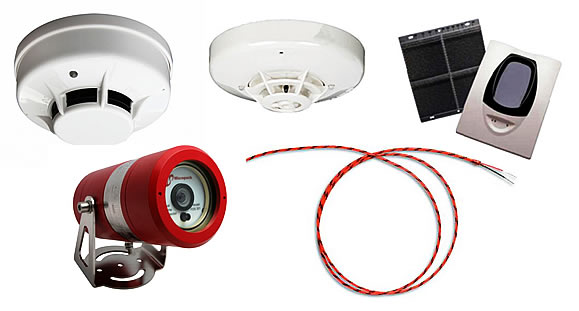Fire Detection
UL , EN and VDS approved Fire Alarm Panels by Schrack, Honeywell, Ravel, Agni and many more …

UL , EN and VDS approved Fire Alarm Panels by Schrack, Honeywell, Ravel, Agni and many more …

A fire alarm system has a number of devices working together to detect and warn people through visual and audio appliances when smoke, fire, carbon monoxide or other emergencies are present.
These alarms may be activated automatically from smoke detectors and heat detectors or may also be activated via manual fire alarm activation devices such as manual call points or pull stations.
Alarms can be either motorized bells or wall mountable sounders or horns. They can also be speaker strobes which sound an alarm, followed by a voice evacuation message which warns people inside the building not to use the elevators.
The biggest different between conventional and addressable fire alarms is scale.
Conventional fire alarms are ideal for small buildings, such as individual offices or retail shops.
They go off individually when they detect smoke or heat and will help everyone escape from your building safely and quickly.
Addressable fire alarms are a necessity for large building complexes or campuses. Addressable fire alarm systems can be customized in a variety of ways, including:
Addressable fire alarm systems are typically more expensive than conventional alarms, but the extra information they provide to firefighters and building managers is invaluable.
Conventional fire alarms can be set up in zones, with each zone hardwired to a control panel or zone expander.
Conventional fire alarm systems are much less expensive and require significantly less labour to install.
for a large building or campus, addressable fire alarms are invaluable. Since they show exactly which devices are going off, it makes it extremely easy to figure out either where there is a fire or, in the event of a false alarm, which specific device is having a problem.
Another benefit of addressable fire alarms is that they require less cabling than conventional fire alarms. All of the devices installed as part of an addressable fire alarm system connect to a single cabling loop that runs through the entire premises, making it easy to add new devices to the existing system.
SCHRACK, HONEYWELL, APOLLO, GST, RAVEL, And many more


SMOKE, HEAT, MULTISENSOR, FLAME, BEAM, LINEAR HEAT SENSING CABLE, L.I.S.T.E.C, ALL AVAILABLE IN NORMAL, INTRINSICALLY SAFE, ATEX APPROVED (CONVENTIONAL AND ADDRESSABLE)